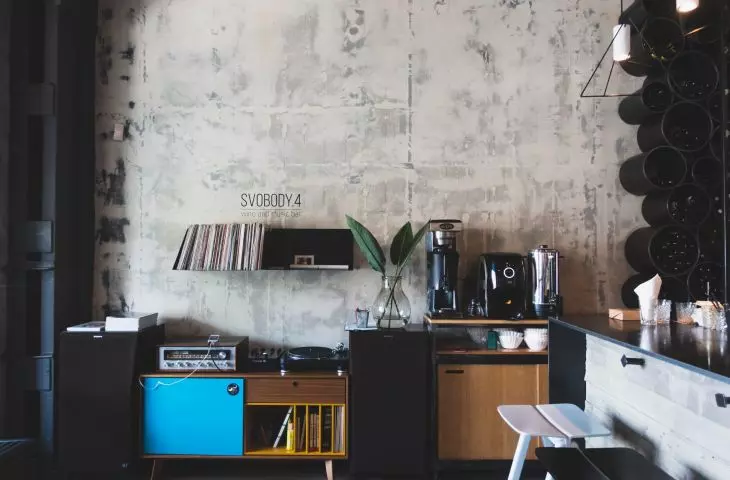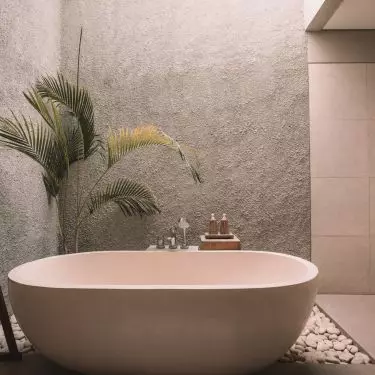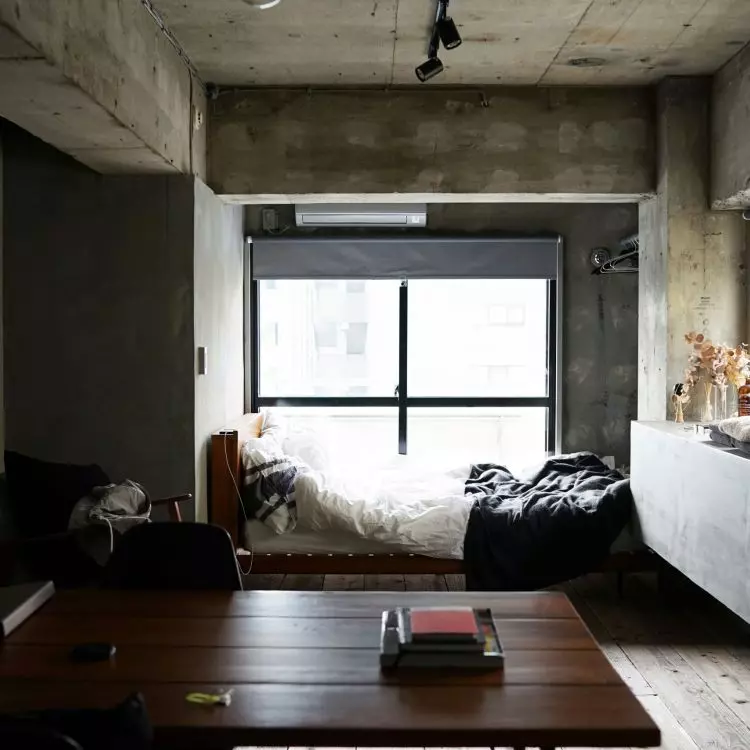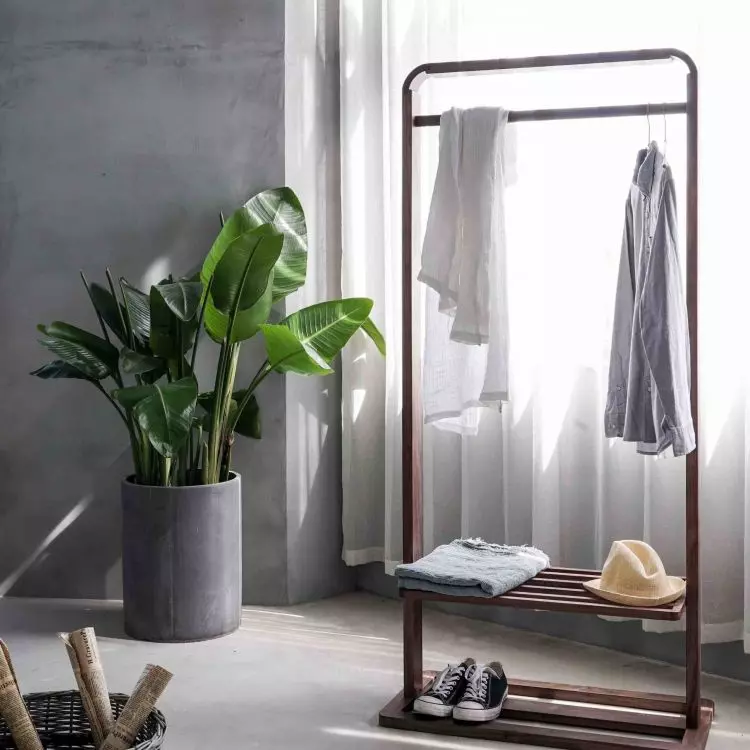Concrete is one of the most commonly used materials in construction. Now, it has also gained great popularity as an element of interior design. For this purpose, a special type of this material is used, the so-called architectural concrete. What is worth knowing about it and in which interiors can it work?
What is architectural concrete and what to use it for?
Architectural concrete, also called decorative concrete, is a variety of concrete, which is used to cover visible, exposed surfaces. It is produced from a combination of cement, aggregate, water and material-enhancing chemicals. It is most often found in the form of large concrete slabs placed, for example, on the surface of a wall. Architectural concrete is also available in roll form and as a decorative plaster for self-spreading sold in buckets.
What can be made from architectural concrete?
Architectural concrete is most often used in interiors for finishing walls and floors. This material can also be used to make elements such as kitchen and bathroom countertops, as well as garden design elements for example heavy garden furniture, patio slabs and fences. Many manufacturers offer decorative concrete in a variety of shades - usually neutral ones like white, light and dark gray, and deep anthracite. Concrete surfaces also vary in texture. You can choose between smooth concrete and medium or highly porous concrete.
You can find more inspiration in the search engine of the Products for Home portal under the keyword "concrete".
Concrete can be used in interiors in many ways
Photo here © Unsplash
What is the difference between normal concrete and architectural one?
Architectural concrete actually differs little from structural one, which is used, for example, for foundations. The composition of both is very similar, but since architectural concrete should also have a decorative function, its surface must be finished with the utmost care. That is why one of the most popular solutions is ready-made concrete slabs. Buying this material, you can be sure that the surface decorated with it will look impeccable.
To which interiors does architectural concrete fit?
Architectural concrete gained popularity when industrial, minimalist and monochromatic arrangements became fashionable. Concrete fits perfectly in such interiors and combines well with other materials - both with warm wood and cool steel. Raw concrete will look very good in the company of exposed brick and warming interior fabrics. On a concrete background, both vivid, saturated colors and subdued, universal colors such as white or black look great. Concrete elements can be incorporated into many different arrangements. What are the most popular ones?
Architectural concrete in a modern bathroom
Due to its properties, architectural concrete can also be successfully used in bathrooms. Concrete will be a great substitute for traditional ceramic tiles and natural stone, which is usually expensive and difficult to work with. Architectural concrete has great hygroscopic properties, which means that it is resistant to moisture and water. Concrete in the bathroom will work well in both wet and dry areas. It can be laid on walls and floors. Concrete surfaces used in wet zones should be treated with an impregnating agent to increase their resistance.
How to arrange a wall using architectural concrete? Such surfaces will work well in a modern interior. Concrete on the wall blends perfectly with white, black, as well as natural wood elements that warm up the interior. In a bathroom with concrete elements, it is also worth placing green potted plants - but only where they will have access to natural light.
Concrete will work well in a modern bathroom with eco elements
Photo by Jared Rice © Unsplash
Concrete wall in an industrial living room
Concrete on a living room wall can be a great alternative to traditional paint or wallpaper. Architectural concrete will be the perfect wall decoration for a loft living room. You can put concrete slabs on all the walls or, if you want a more delicate effect, only on one of them - for example, the one behind the TV. Almost any color of lounge furniture will go with a concrete wall. If you want to achieve a very subdued, austere effect, choose a sofa or corner sofa in a shade of gray. If you want to liven up the arrangement a bit, a piece of furniture in a mustard or raspberry-pink shade may also work well.
Architectural concrete in a minimalist bedroom
Architectural concrete will also work great in the bedroom! Both modern and minimalist, as well as industrial or Scandinavian. You can put concrete slabs, for example, on the wall behind the head of the bed. Such a surface will look very decorative and will turn an ordinary bedroom into an interesting and unusual interior. If you want to warm up the look you get with concrete, you can arrange delicate wooden laths on part of the concrete wall. Add to this wooden furniture, decorative elements of black steel, simple white bedding and the perfect minimalist bedroom is ready!
Concrete on the walls will be the perfect backdrop for a minimalist bedroom
Photo by Joseph Albanese © Unsplash
Architectural concrete - not only on the walls
Architectural concrete can be used not only on walls and floors. This raw material is also used for furniture or heavy patio and garden pots. Very often you can also see decorations or accessories for interiors made of concrete - for example, bathroom sets containing a soap dish, liquid soap container or toothbrush cup. Concrete-coated lamps are also gaining popularity, as they fit perfectly into industrial settings.
If you like minimalist, austere and monochromatic interiors, architectural concrete can be a great material to complete the design of your house or apartment. You can use it in different rooms and in many diffrent ways. Which one do you like best?
Are you decorating your apartment? We have more information about wall coverings for you!
Compiled by:OLGA TRĘDOTA
































